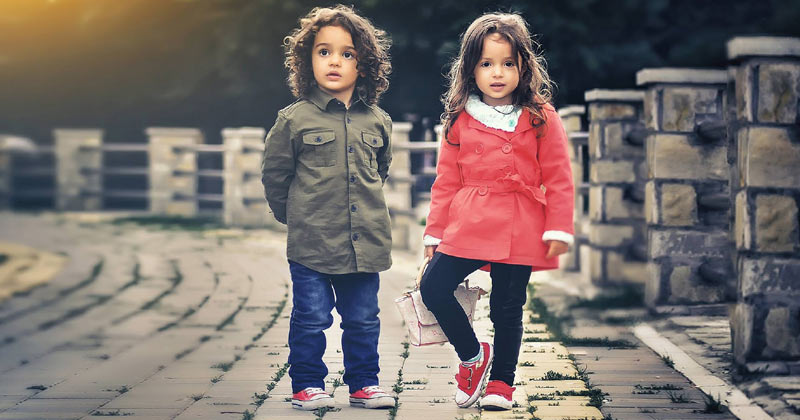How do you measure the correct size of baby shoes? Here, you will find measurement instructions and shoe size baby tables by CM and age. With this baby shoe size guide, you can easily convert the foot length into the baby shoe size.

Measure Baby’s Shoe Size by Determining the Foot Length – Baby Shoe Size Guide
If you put children on their feet, half of their feet usually still hang in the air: the toddlers never actually put up their entire feet. Therefore, you should measure your child’s foot length directly on the foot.
Measure the baby’s foot by placing a measuring tape or ruler on the surface of the foot. Try to cover the entire area. It usually tickles and a child can hardly stay still. If you have measured from the heel to the longest toe, you can determine the right shoe size through this table.
Incidentally, it is worth measuring both feet as they are usually different sizes. You can choose the shoe according to the length of the larger foot.
If the shoes are chosen too small, this affects the growth of the feet and can lead to long-term health consequences. If the shoes are too big, a pair of thick socks is enough for correction.
| CM | UK Size |
| 9 | 0 |
| 9.3 | 0.5 |
| 9.7 | 1 |
| 10 | 1.5 |
| 10.3 | 2 |
| 11 | 2.5 |
| 11.6 | 3 |
| 12 | 3.5 |
| 12.3 | 4 |
| 12.7 | 4.5 |
| 13 | 5 |
| 13.3 | 5.5 |
| 13.8 | 6 |
| 14.2 | 6.5 |
Baby Shoe Size Table by Age
What size shoes does a baby have at 6 months? This shoe size table with the baby shoe sizes by age (months and years) gives the right answer. You can also determine the shoe sizes for newborns.
Most Babies move to crawl and fall. Nevertheless, you should pay attention to the right size of socks or baby walkers. Shoes that are too small, tight or hard, hinder the development of foot motor skills.
If possible, avoid shoes as often as possible at home and in warm weather. In cooler weather and when the feet need to be protected, protective footwear should of course be worn.
| UK Size | Age |
| 0 | 0-2 months |
| 0.5 | 0-2 months |
| 1 | 0-2 months |
| 1.5 | 1 – 3 months |
| 2 | 3 – 6 months |
| 2.5 | 6 – 9 months |
| 3 | 9 – 11 months |
| 3.5 | 10 – 12 months |
| 4 | 12 – 15 months |
| 4.5 | 13 – 15 months |
| 5 | 15-18 months |
| 5.5 | 16-18 months |
| 6 | 19-21 months |
| 6.5 | 21-24 months |
Socks or Shoes?
Shoes protect the foot from injuries, support running, and provide warmth. As long as your baby is only crawling, he or she simply does not need shoes. Socks are more than enough. Often, when babies wear shoes too early, they cannot develop a healthy feeling for their feet. But when is the right time for shoes? As soon as your baby starts trying to walk, it’s time for their first shoe.

Suggested Read: Pregnancy And Stretch Marks
From Crawling Shoes to Running Shoes and Slippers
Rolling, crawling, tumbling, getting up and running, that is how the babies develop rapidly. There is a high demand for shoes. According to the baby shoe size guide, babies crawling shoes must be robust so that they are not damaged when they crawl on the floor. At the same time, they must be soft and support the children’s natural body feeling.
Shoes for children must have a non-slip sole and provide support. This is the only way to prevent painful falls. The toe area of the baby’s shoes is reinforced to prevent malformations.
Shoes for babies must be free of harmful substances. The shoes should not contain small parts that could be swallowed. Baby shoes that are dermatologically tested are ideal.

US, UK and EU Shoe Size Conversion – Baby Shoe Size Guide
Here is the shoe conversion table for the sizes in the UK, the US and Europe as shoes are mostly available in India in all these formats.
| EU | UK | US |
| 15 | 0 | 0.5 |
| 15.5 | 0.5 | 1 |
| 16 | 1 | 1.5 |
| 16.5 | 1.5 | 2 |
| 17 | 2 | 2.5 |
| 18 | 2.5 | 3 |
| 19 | 3 | 3.5 |
| 19.5 | 3.5 | 4 |
| 20 | 4 | 4.5 |
| 20.5 | 4.5 | 5 |
| 21 | 5 | 5.5 |
| 21.5 | 5.5 | 6 |
| 22.5 | 6 | 6.5 |
| 23 | 6.5 | 7 |
Suggested Read: How To Use Nebulizer For Baby
TIPS
- Measure baby feet with the ruler and calculate correct baby shoe sizes on the calculator or look in the size chart.
- Rule of thumb: baby socks for toddlers who cannot walk yet. You only need shoes as soon as babies take the first steps.
- Pay attention to non-slip soles and soft materials.
- Baby shoes are never the right size for a long time.


